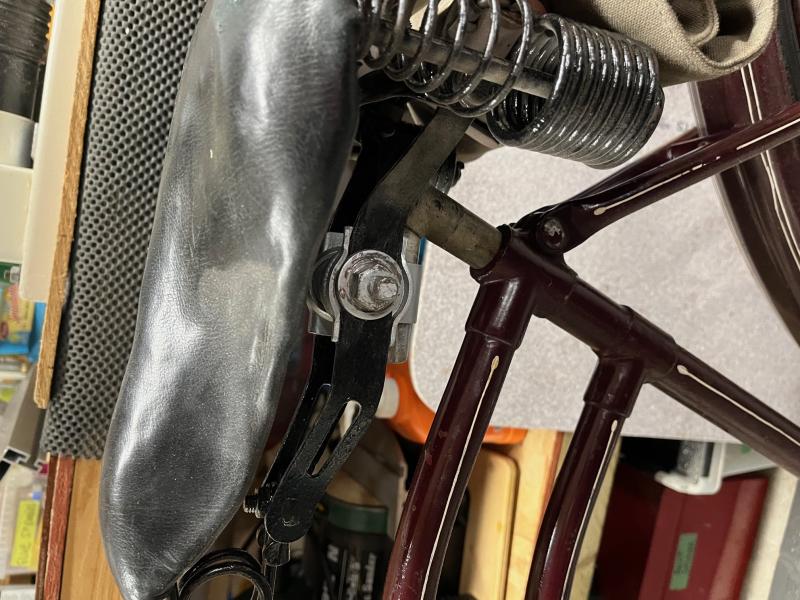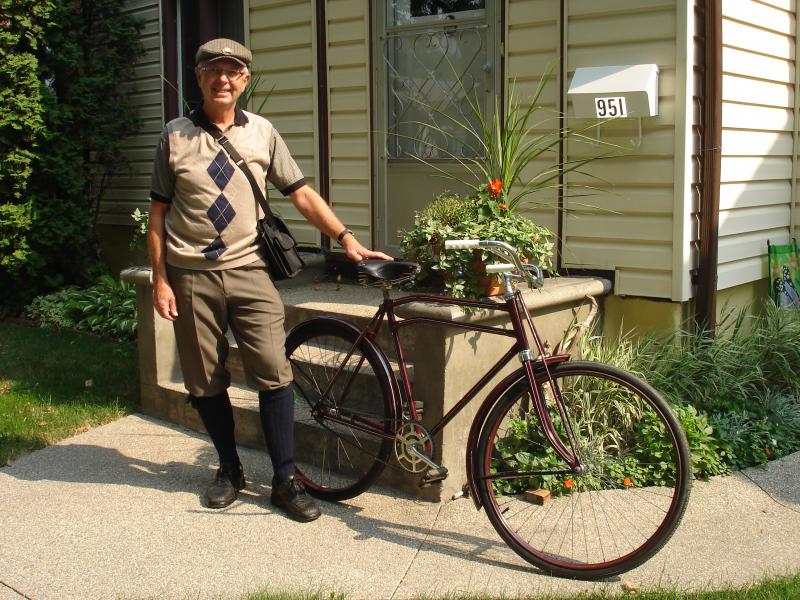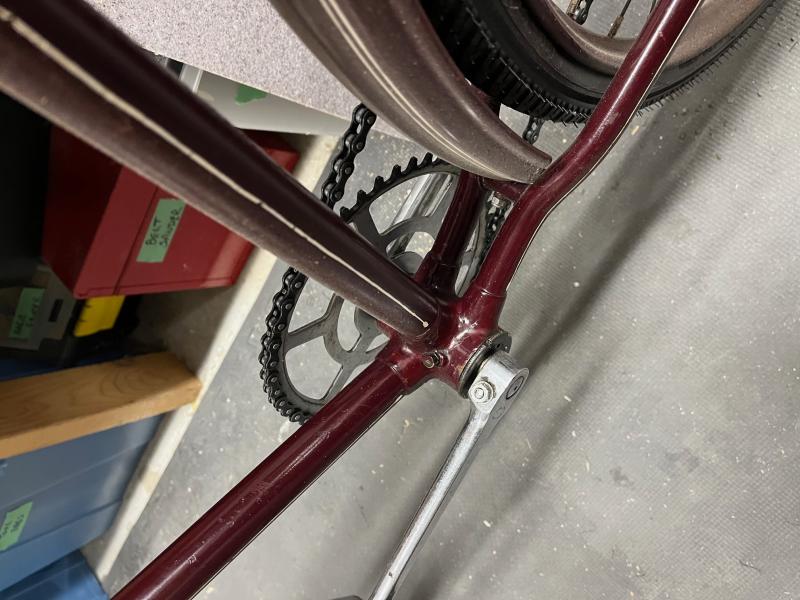Would like to know more about my bike
Hi from Wiinipeg ; I am trying to find more info about a bike my old neighbour passed along to me. I think it was made by CCM but does not have the signature logo on the cranks arms and there is no name plate, CCM marking on the brake asist on back hub, Serial # 619077, front hub markings - PhilipsCeltonia, all steel, England, Please see pics.
Neil Sander









The subject bicycle style is generically referred to as a “motorbike”. These became popular around the Great War era and were intended to appeal to boys’ interests in motorcycles, by incorporating motorcycle features of the era. Common motorcycle features included the reinforced frame with double top tube, reinforced fork with truss rods and reinforced handlebars with cross brace, all of which are seen on this bicycle. Other common motorbike features were a faux gas tank and rear axle mounted stand.
Assuming that the reported serial number is complete, it would not appear to be a CCM bicycle, as they incorporated an alpha character in the serial number format starting with the 1921 model year and other characteristics point towards a later time period. For instance, the bright parts appear to chrome plating, which didn’t become commercially available until the very late 1920s and wasn’t adopted by most bicycle manufacturers until the 1930s. (CCM started using it in 1934). Also, the white tip on the rear fender didn’t become law until the late 1930s (first seen in 1936 CCM catalogue).
Consequently, the earliest it appears to be is late 1930s. While it could be post war, the forward extension seat post had largely disappeared by then. Motorbike manufacturing, with all those extras, was suspended for the war, starting in the fall of 1941, as part of the Materials Conservation Act. So, the most likely timeframe appears to be circa 1936 -1941. Of course, that’s assuming the discussed parts are OEM, which is always a pitfall when assessing vintage bicycles.
The presence of the cottered, UEK style crankarm suggests this is a budget bicycle. Most premium models of the era used a cotterless crankset, either three piece or single piece. CCM only used cottered crankets on their budget brands, children’s bicycles and those contract manufactured for private labels. The generic fork is also typical of budget models and CCM typically marketed this style as their replacement fork.
It would be interesting to see some additional photos, in an attempt to verifiy the above assessment. First and most important would be the serial number, to see if it is complete. Sometimes CCM would stamp the alpha character above or below the numerals. Photos of the brake arm and any inscriptions on the hub would be appreciated, in addition to a photo of the upper stack of the headset, to see if it is another CCM product.